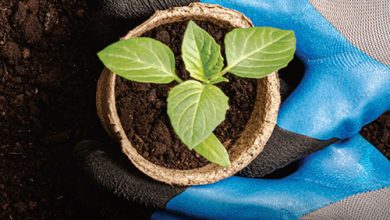COVER STORY
GREEN ARCHITECTURE
Building Sustainably
Murad Ismail unravels the workings of sustainable design and discusses the future of architecture
Q: Could you describe the concept of sustainable design? And what does it aim to accomplish?
A: Sustainable design aims to minimise adverse impacts on the Earth. As much as we talk about the environment, we must first recognise that there are eight billion people to accommodate. This is where environmental economics is factored in, weighing the pros and cons to provide for the population of the world with minimal damage to the planet.
There is a misconception that all environmentally-friendly materials are biodegradable. In reality, for a design to be eco-friendly, the materials must be able to withstand the test of time over the course of the lifetime of a product – i.e. if a building is made to last 100 years, the materials should be able to sustain itself for that period without requiring much maintenance.
We as an island nation need to obtain materials from diverse regions without depleting the surrounding resources to find suitable products

Principal Architect
MICD Associates
Environmentally responsible economics should involve considering the resources taken from the environment and the energy required to prpare them for building whilst comparing this to the amount of energy that they will provide in the form of durability.
If a building must last for 100 years, it’s pointless using materials that do so for only five years and need to be replaced or actively maintained to ensure longevity. Most products used to maintain materials contain chemicals that are harmful to the environment. In my opinion therefore, the only criteria for determining whether a substance is environmentally friendly should be the energy used to create it and that it will provide.
Energy utilised to operate a structure – be it electricity or water – is another part of sustainable design. Sustainable energy in this context would be nontraditional energy sources like solar and wind.
Even in this instance however, while enabling alternative energy sources, the scale of the structure (such as solar panels) needs to be taken into account. If a project is to be equipped with solar power, the solar farm would necessitate the destruction of a corresponding area of vegetation. Designs must take into account different strategies for using alternative sources of energy to power buildings without obliterating the environment’s chlorophyll count.
It’s important to factor actual vegetation and chlorophyll levels in sustainable design. To preserve the amount of chlorophyll in terms of carbon utilisation related to land use when a structure is developed on an acre of land, we must ensure that the greenery destroyed in this area is represented in its edifice.
Q: What role do you believe green building standards will serve in the future?
A: Green building standards go beyond materials and energy. In Sri Lanka, brick (considered to be an environmentally-friendly material) is made from clay collected from riverbanks, which leads to erosion. As such, to create environmentally-friendly materials, the environment is destroyed.
We need to be very careful in what we consider to be environment friendly. However, to achieve a carbon zero footprint, we must use materials that will last the lifespan of the building rather than expending resources to maintain short-lived products.
Looking at green certification – which mentions using materials within 1,000 kilometres of the site in addition to other requirements – it must be noted that while it’s nice to build using such materials, we as an island nation need to obtain materials from diverse regions without depleting the surrounding resources to find suitable products. Recycled materials such as plastic are truly acceptable as they are not discarded after serving their initial purpose.
On that note, the definition of ‘green building’ should be one that prevents long-term environmental damage. Green construction can use energy, chlorophyll and material choices to your advantage by wisely utilising the natural world.
Q: And what green technologies and eco-innovations are most likely to be used in the future?
A: In my opinion, the majority of commercial aspects will revolve around more modern and sustainable materials, energy sources and energy efficient machinery. But we must not deplete our greenery.
The ability to house eight billion people will result in the destruction of a substantial percentage of the Earth’s vegetation, notwithstanding the focus of the future on newer materials. This loss must be made up for on the constructed edifices.
It’s time for us as an island to actively work to replace chlorophyll on edifices since many East Asian nations are gradually implementing this idea in their architecture.






